Dechun Wang
SoybeanNet: Transformer-Based Convolutional Neural Network for Soybean Pod Counting from Unmanned Aerial Vehicle (UAV) Images
Oct 16, 2023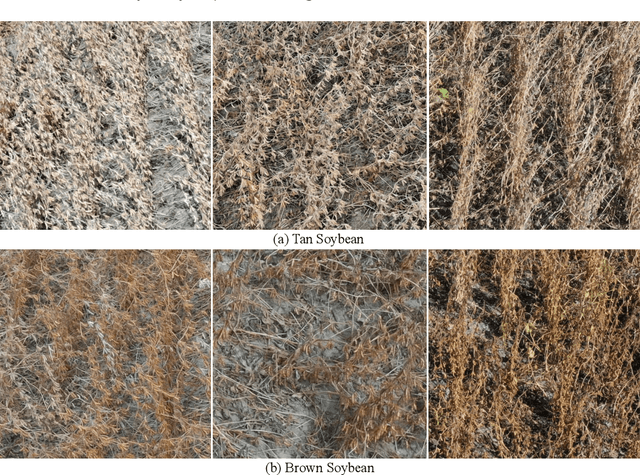
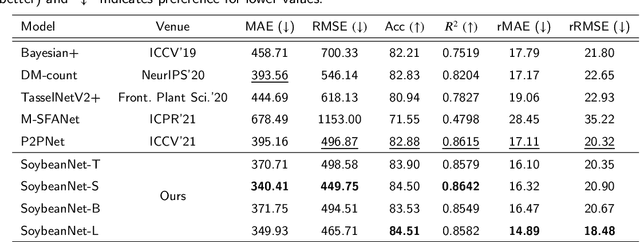
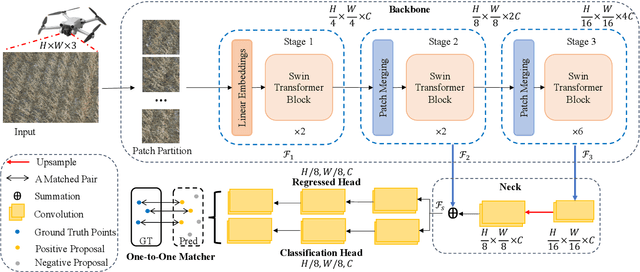
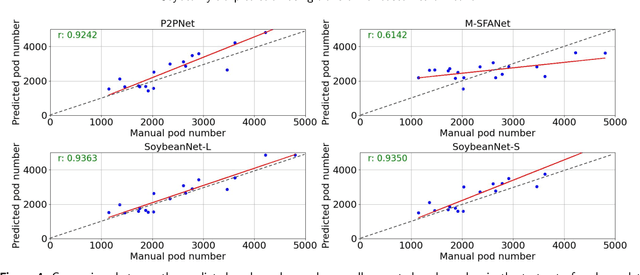
Abstract:Soybeans are a critical source of food, protein and oil, and thus have received extensive research aimed at enhancing their yield, refining cultivation practices, and advancing soybean breeding techniques. Within this context, soybean pod counting plays an essential role in understanding and optimizing production. Despite recent advancements, the development of a robust pod-counting algorithm capable of performing effectively in real-field conditions remains a significant challenge This paper presents a pioneering work of accurate soybean pod counting utilizing unmanned aerial vehicle (UAV) images captured from actual soybean fields in Michigan, USA. Specifically, this paper presents SoybeanNet, a novel point-based counting network that harnesses powerful transformer backbones for simultaneous soybean pod counting and localization with high accuracy. In addition, a new dataset of UAV-acquired images for soybean pod counting was created and open-sourced, consisting of 113 drone images with more than 260k manually annotated soybean pods captured under natural lighting conditions. Through comprehensive evaluations, SoybeanNet demonstrated superior performance over five state-of-the-art approaches when tested on the collected images. Remarkably, SoybeanNet achieved a counting accuracy of $84.51\%$ when tested on the testing dataset, attesting to its efficacy in real-world scenarios. The publication also provides both the source code (\url{https://github.com/JiajiaLi04/Soybean-Pod-Counting-from-UAV-Images}) and the labeled soybean dataset (\url{https://www.kaggle.com/datasets/jiajiali/uav-based-soybean-pod-images}), offering a valuable resource for future research endeavors in soybean pod counting and related fields.
Colorectal Polyp Detection in Real-world Scenario: Design and Experiment Study
Jan 11, 2021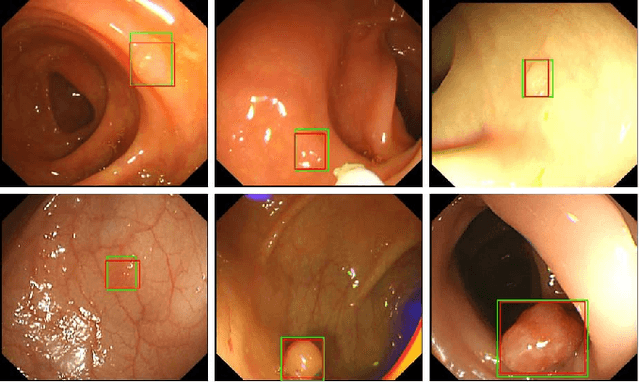
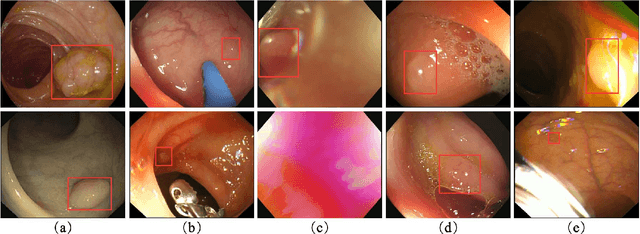


Abstract:Colorectal polyps are abnormal tissues growing on the intima of the colon or rectum with a high risk of developing into colorectal cancer, the third leading cause of cancer death worldwide. Early detection and removal of colon polyps via colonoscopy have proved to be an effective approach to prevent colorectal cancer. Recently, various CNN-based computer-aided systems have been developed to help physicians detect polyps. However, these systems do not perform well in real-world colonoscopy operations due to the significant difference between images in a real colonoscopy and those in the public datasets. Unlike the well-chosen clear images with obvious polyps in the public datasets, images from a colonoscopy are often blurry and contain various artifacts such as fluid, debris, bubbles, reflection, specularity, contrast, saturation, and medical instruments, with a wide variety of polyps of different sizes, shapes, and textures. All these factors pose a significant challenge to effective polyp detection in a colonoscopy. To this end, we collect a private dataset that contains 7,313 images from 224 complete colonoscopy procedures. This dataset represents realistic operation scenarios and thus can be used to better train the models and evaluate a system's performance in practice. We propose an integrated system architecture to address the unique challenges for polyp detection. Extensive experiments results show that our system can effectively detect polyps in a colonoscopy with excellent performance in real time.
Colorectal Polyp Segmentation by U-Net with Dilation Convolution
Dec 26, 2019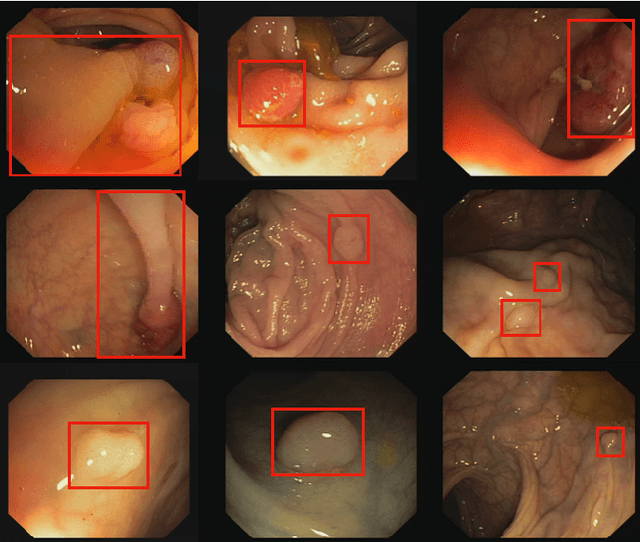

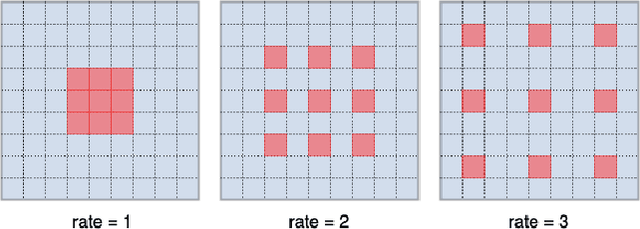

Abstract:Colorectal cancer (CRC) is one of the most commonly diagnosed cancers and a leading cause of cancer deaths in the United States. Colorectal polyps that grow on the intima of the colon or rectum is an important precursor for CRC. Currently, the most common way for colorectal polyp detection and precancerous pathology is the colonoscopy. Therefore, accurate colorectal polyp segmentation during the colonoscopy procedure has great clinical significance in CRC early detection and prevention. In this paper, we propose a novel end-to-end deep learning framework for the colorectal polyp segmentation. The model we design consists of an encoder to extract multi-scale semantic features and a decoder to expand the feature maps to a polyp segmentation map. We improve the feature representation ability of the encoder by introducing the dilated convolution to learn high-level semantic features without resolution reduction. We further design a simplified decoder which combines multi-scale semantic features with fewer parameters than the traditional architecture. Furthermore, we apply three post processing techniques on the output segmentation map to improve colorectal polyp detection performance. Our method achieves state-of-the-art results on CVC-ClinicDB and ETIS-Larib Polyp DB.
AFP-Net: Realtime Anchor-Free Polyp Detection in Colonoscopy
Sep 26, 2019



Abstract:Colorectal cancer (CRC) is a common and lethal disease. Globally, CRC is the third most commonly diagnosed cancer in males and the second in females. For colorectal cancer, the best screening test available is the colonoscopy. During a colonoscopic procedure, a tiny camera at the tip of the endoscope generates a video of the internal mucosa of the colon. The video data are displayed on a monitor for the physician to examine the lining of the entire colon and check for colorectal polyps. Detection and removal of colorectal polyps are associated with a reduction in mortality from colorectal cancer. However, the miss rate of polyp detection during colonoscopy procedure is often high even for very experienced physicians. The reason lies in the high variation of polyp in terms of shape, size, textural, color and illumination. Though challenging, with the great advances in object detection techniques, automated polyp detection still demonstrates a great potential in reducing the false negative rate while maintaining a high precision. In this paper, we propose a novel anchor free polyp detector that can localize polyps without using predefined anchor boxes. To further strengthen the model, we leverage a Context Enhancement Module and Cosine Ground truth Projection. Our approach can respond in real time while achieving state-of-the-art performance with 99.36% precision and 96.44% recall.
3D Anchor-Free Lesion Detector on Computed Tomography Scans
Aug 29, 2019


Abstract:Lesions are injuries and abnormal tissues in the human body. Detecting lesions in 3D Computed Tomography (CT) scans can be time-consuming even for very experienced physicians and radiologists. In recent years, CNN based lesion detectors have demonstrated huge potentials. Most of current state-of-the-art lesion detectors employ anchors to enumerate all possible bounding boxes with respect to the dataset in process. This anchor mechanism greatly improves the detection performance while also constraining the generalization ability of detectors. In this paper, we propose an anchor-free lesion detector. The anchor mechanism is removed and lesions are formalized as single keypoints. By doing so, we witness a considerable performance gain in terms of both accuracy and inference speed compared with the anchor-based baseline
 Add to Chrome
Add to Chrome Add to Firefox
Add to Firefox Add to Edge
Add to Edge